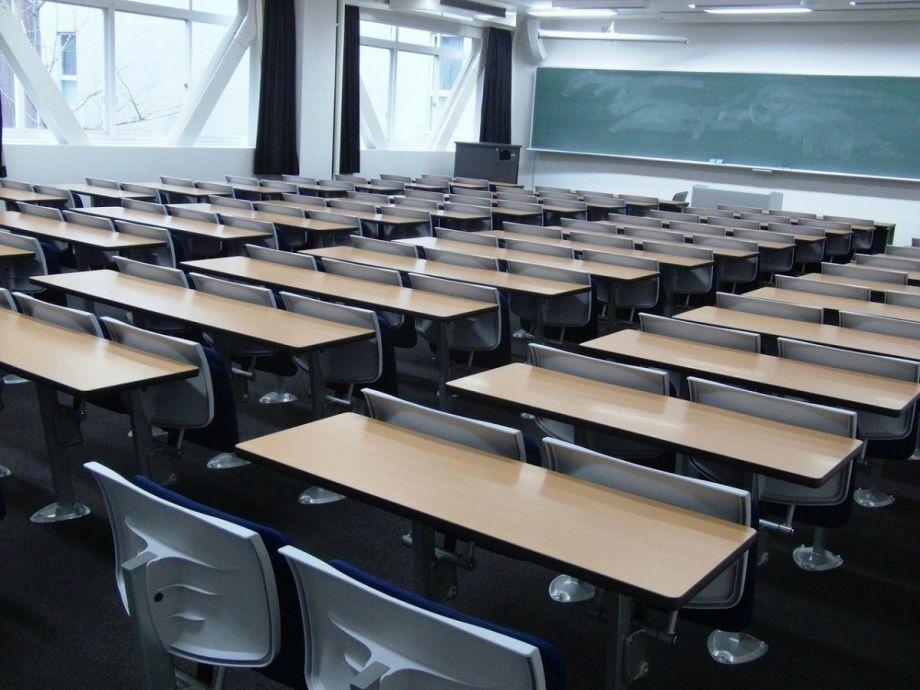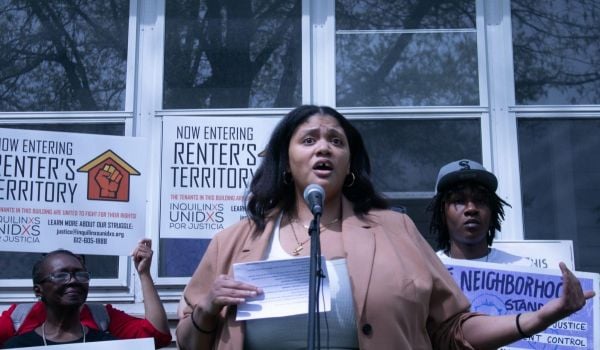Following a year of teacher strikes where educators in West Virginia, Los Angeles, Denver and beyond called for wage increases and reduced class sizes, Sen. Jeff Merkley (D-OR) has introduced a new bill to incentivize smaller class sizes in kindergarten and first, second and third grades. The legislation, which would allocate $2 billion for competitive grant funding, primarily to high-poverty school districts in the United States, is co-sponsored by Democratic Sens. Kamala Harris (CA), Kirsten Gillibrand (NY), Elizabeth Warren (MA), Cory Booker (NJ) and Michael Bennet (CO). The bill is also endorsed by the American Federation of Teachers, the National Education Association, the National Parent Teacher Association, and First Focus Campaign for Children.
Merkley says his bill is not a direct response to the teacher uprisings, but rather a reaction after discovering his son’s surprisingly large first-grade class. “My memory of my first-grade class was there was about 20 kids in it,” he says. “When I saw my son’s class I thought, how is the teacher ever going to be able to do this with 34 5- and 6-year-olds? We are the wealthiest nation on earth and can afford to do better.”
Class size reduction has long been a popular policy among parents and educators, but in state and federal government, interest in the issue has waxed and waned over the last two decades.
To fund smaller class sizes, states and school districts have been able to use Title II-A money, which is an annual pot of federal funds available for teacher quality initiatives. In the early 2000s, 57 percent of all Title II-A funds indeed went for this purpose. But by 2015, just 25 percent of those dollars were going to class size reduction, with far more dollars now spent on things like professional development.
One reason cities and states began to turn away from class size reduction was basic purse-string tightening. Nineteen states began eliminating or loosening their class size limits following the 2008 recession to save money. But class size reduction also began to fall out of favor with policymakers and education wonks, as interest in alternative reform policies, like evaluating teachers based on student standardized test scores, ticked up.
Advocates for class size reduction as an evidenced-based reform point to studies showing a link between higher academic achievement and fewer students per class. The most reputable study, known as Project STAR, is from the mid-1980s, when researchers randomly assigned students and teachers in Tennessee elementary schools to classes with an average of 15 students or 23 students. The study found students in the smaller classes tested better, with the improvements particularly significant among disadvantaged children. Later research found that the smaller class sizes also increased the probability of attending college, with the effects more than twice as large among black students.
Other influential research has suggested that setting the class size cap below 20 students will yield the greatest benefits, and Merkley’s bill caps class size at 18.
Some experts object to class size reduction — arguing it’s a cover for district bloat, and less effective than other reforms for similar or even lesser costs. Prominent critics include journalist Malcolm Gladwell and former Education Secretary Arne Duncan. Others point to implementation challenges: In California, when the state legislature passed a $1.6 billion measure in 1996 to incentivize reduced class sizes in grades K-3, it was universally adopted very quickly. Researchers later found that the rapid statewide reduction in class size led to an influx of new, inexperienced teachers, and many teachers working in poorer schools in Los Angeles and Oakland left to fill the new vacancies in wealthier districts. While the researchers found that smaller classes boosted student achievement when all else was held equal, the rollout of the policy was tumultuous, and appeared to negatively impact some students and schools it was aimed to help.
Leonie Haimson, executive director of Class Size Matters, a nonprofit that advocates for smaller classes, says Merkley’s bill is “very important” and targets a major problem in public education. “As the teacher strikes reveal, and data shows, class sizes have increased across the country since the recession, and even though we’re a decade past that point, school budgets and class sizes still haven’t recovered,” she says. “Increases in class size have severely damaged the quality of education for all children in affected schools, but especially disadvantaged students and students of color, who see twice the benefit from smaller classes than the average student.”
Haimson praises Merkley’s bill for its requirement that districts report how smaller class size affects teacher retention and turnover rates, as well as student discipline and chronic absenteeism. Haimson says the bill could be improved by more explicitly defining how grant recipients should report the number of new teachers hired, how many new classes are added and by how much class sizes went down. “In the past, state and city audits have shown that at least half of the districtwide class size reduction that the New York City Department of Education claimed was a result of a state grant class size reduction program was due instead to falling enrollment,” she explains.
Regarding policy criticisms around class size reduction, Merkley says he agrees “other things need to be done” to improve schools, but he emphasizes his conversations with child experts lead him to believe that investments in smaller class size for the early grades can “make such a profound difference for everything that goes forward.”
Would he want smaller class sizes for middle and high school, too? While most studies have focused on K-3, conceivably fewer students per class would have an impact in more advanced courses as well.
“The studies we’ve looked at say K-3 is where it matters the most, but if we start here, we can evaluate the impact and decide,” he says. “If we do this right, evaluate it, and find out it doesn’t have an impact, then that will be information worth having and can change how we allocate our resources.”
Rachel Cohen is a D.C.-based freelance journalist and a contributing writer for the Intercept.













